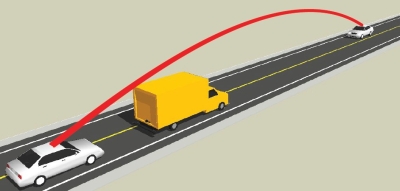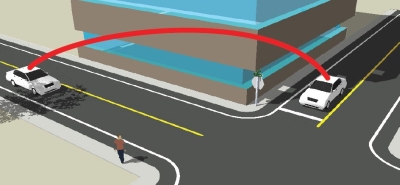Интеллект на транспорте
Intelligent Transport Systems (ITS) Australia in deal for US technology |
| 23.02.2014 12:23 |
|
Метки (тэги, tags): Intelligent Transport Systems Australia (ITS Australia) (www.its-australia.com.au) has commented on the United States Government announcement that it will begin taking steps to enable vehicle-to-vehicle (V2V) communication technology for light vehicles. ITS “Passive safety products, such as seat belts and air bags that protect people in a crash, have greatly reduced road trauma,” said Susan Harris. “V2V technology is the next major step forward. This active safety system enables real-time communication between vehicles to help avoid collisions in the first place.”
Vehicle-to-vehicle communication improves safety by allowing vehicles to ‘talk’ to each other and exchange basic data, such as speed, position and projected path, ten times per second.
This technology improves safety by allowing vehicles to ‘talk’ to each other and exchange basic safety data, such as speed, position and projected path, ten times per second. The DOT announcement includes ‘multiple layers of security and privacy protection’. The NHTSA is now finalising the analysis of the data from this study. NHTSA will then begin working on a regulatory proposal that would require V2V devices in new vehicles in a future year, consistent with applicable legal requirements, executive orders, and guidance. DOT believes that the signal this announcement sends to the market will significantly enhance development of this technology and pave the way for market penetration of V2V safety applications. Australian ITS leadership “ Intelligent Transport Cooperative Research Centre To capitalise on and grow the advanced capabilities of the local ITS industry, ITS
An active safety system, vehicle to vehicle technology enables real time communication between vehicles to warn drivers about specific hazards, such as an impending collision at a blind intersection.
The charter for the Intelligent Transport CRC will be to deliver major benefits to Transport systems and infrastructure across different modes (including rail, public and private road vehicles). Intelligent Connected Vehicles. Transition and implementation towards a smart, connected transport network. Safety and efficiency gains from smart transport systems are immense. In addition, the CRC will seek to ensure efficient pathways as, for example, the reliance on physical roadside signs reduces in preference to advice directly communicated to the driver in the vehicle. The CRC will also consider important legacy systems taking account of the needs of all road users, including groups such as pedestrians and cyclists. Susan Harris said a CRC will ensure that “In addition, safety will also greatly benefit from CRC research work. Whilst it continues to reduce thanks to improved passive safety equipment and active innovations such as electronic stability control, the road death toll in “This tragedy costs the nation an estimated $27 billion a year and causes incalculable personal grief and trauma. Cooperative Intelligent Transport Systems that communicate with each other, such as Vehicle–to-Vehicle and Vehicle-to-Infrastructure, will take safety intervention from helping people to survive crashes to the next level of avoiding crashes. “A well-funded CRC will also facilitate a smooth transition and implementation pathway for “The DOT secretary Foxx said ‘The potential of this technology is absolutely enormous’ and gave the green light for the use of V2V devices in future vehicles. “A CRC focused on smart transport will deliver significant benefits to the industry, the national economy and the community at large. There are compelling reasons why the Intelligent Transport CRC must become a reality and there is strong support for it across To learn more about the Intelligent Transport CRC, visit www.intelligenttransportcrc.com.
Source: Метки (тэги, tags): Последние похожие материалы:
|




